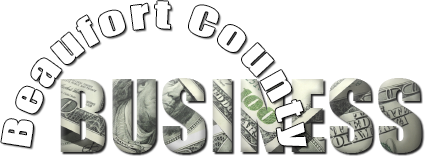Publisher's note: The author of this fine report, Dan Way, is an associate editor of the Carolina Journal, John Hood Publisher.
Tax Foundation study places Tar Heel State's tax burden at No. 17 nationally
RALEIGH North Carolina residents pay nearly 10 percent of their income in taxes, placing the state squarely among the 20th-most taxed in the nation, said the nonprofit Tax Foundation in its most recent Annual State - Local Tax Burden Ranking (
PDF download here).
With its ranking at No. 17, North Carolina has the second-highest tax burden per person among Southern states at 9.9 percent, according to the Tax Foundation researchers. At No. 15, Arkansas' 10.0 percent burden ranks the highest in the South.
The Tar Heel State's ranking could be unwelcome news on a couple of fronts.
"In general, lower tax burdens are going to be associated with more money in the hands of businesses," said Scott Drenkard, a Tax Foundation economist. Businesses can do more hiring and increase productivity in a state where the tax burden is not as high.
"We always say at the Tax Foundation that taxes are one of the reasons people move between states, but not the only reason," said Elizabeth Malm, a Tax Foundation economist and co-author of the research report.
"But I would argue that when making business decisions ... the same would go for an individual," Malm said. People and businesses tend to desire to live in or relocate to a state where the tax climate is more favorable to them.
According to the findings of the foundation's research, released Tuesday, North Carolina residents have a tax burden of 9.9 percent. They paid $2,648 in taxes per capita to their home state, and $887 to other states, for a total of $3,535. Per capita income is $35,659, or 37th lowest among the states. To arrive at the 9.9 percent tax burden, the tax total is divided by the per capita income.
North Carolina residents' tax burden was 9.7 percent in 1977 and dipped to 9.2 percent by 2000. It jumped to 10 percent each year from 2006 to 2009, except for 2008, when it was 10.2 percent, according to a table provided with the research.
The best ranking North Carolina has achieved was in 1977, at 28. But it was as high as 14th in 2008, according to the Tax Foundation data.
This year's ranking is an improvement of one rung on the list.
"In fiscal year 2010 we saw both shrinking taxes paid and shrinking incomes for most state residents, but taxes shrank faster than income in most cases, thus a majority of states saw decreased burdens and the national average decreased very slightly also," Malm said.
The research "uses the most recent data available from the Census Bureau and Bureau of Economic Analysis, among other sources," Malm said. The Census Bureau data was from 2010. "The study provides an estimate of the burden of all state and local taxes on the residents of each state."
Malm said tax burden is different from tax collection.
"The very idea of a tax burden is a measure of the impact of taxes on people, whether those people pay taxes to their state of residence or external states. Only tallying tax collections as a percent of income ignores the latter. The main point is that here we are focusing on the individual taxpayer, not on the collector," Malm said.
"Our study is different from other tax measures in that we account for tax shifting or tax exporting across state lines. This is based on the fact that the economic burden of a tax doesn't necessarily fall on the residents of the state that collects the tax," Malm said.
"States are able to shift their tax burden to residents of other states in many ways. Now some of this tax shifting is natural and unavoidable and some of it is intentional," she said. A person could live in one state but have a business or rental property in another. Or a person may live in one state and pay payroll taxes to work in another state.
Malm gave other examples of tax shifting. Alaska raises more than 70 percent of its revenue from taxes levied on oil companies for what they extract. Much of that is passed on to oil, gas, and petroleum consumers around the country. States such as Nevada and Florida have abundant tourist traffic, so they deliberately ratchet up taxes on lodging, rental cars, restaurants, and other goods and services procured by tourists.
For purposes of the study, the researchers used state energy consumption data in other states to apportion the share of Alaska's petroleum taxes, and used state tourism data to spread tourism-related taxes to other states where the tourists live.
In fiscal year 2010, residents of all states paid a range of 7.0 to 12.8 percent of their incomes to taxes, Malm said, with a national average of 9.9 percent. Since 1977, the average burden has decreased from 10.3 percent, though it had dropped as low as 9.3 percent in 2000.
"The sum of state and local tax revenues for all states between 2009 and 2010 remained relatively stable, decreasing by less than a percentage point," Malm said.
"Property tax revenues were the only major revenue source that grew, while sales, individual income, and corporate income revenues shrank," she said.
Meanwhile, total income within the United States contracted by 0.8 percent in 2010.
Here is the information on other Southern states, according to the Tax Foundation, with the percent of tax burden listed first and the national ranking second:
Arkansas 10.0/15; West Virginia 9.7/19; Kentucky 9.4/26; Florida 9.3/27; Virginia 9.3/30; Georgia 9.0/33; Mississippi 8.7/37; South Carolina8.4/41; Alabama 8.2/43; Louisiana 7.8/47; Tennessee 7.7/48.
The three states that pay the highest state-local tax burdens are New York (12.8), New Jersey (12.4) and Connecticut (12.3). They are the only states above 12 percent.
The bottom three states are Alaska (7.0), South Dakota (7.6) and Tennessee (7.7).
Six of the eight states with the lowest tax burden have no wage-based income tax; three of the lowest 10 have no corporate income tax.





















